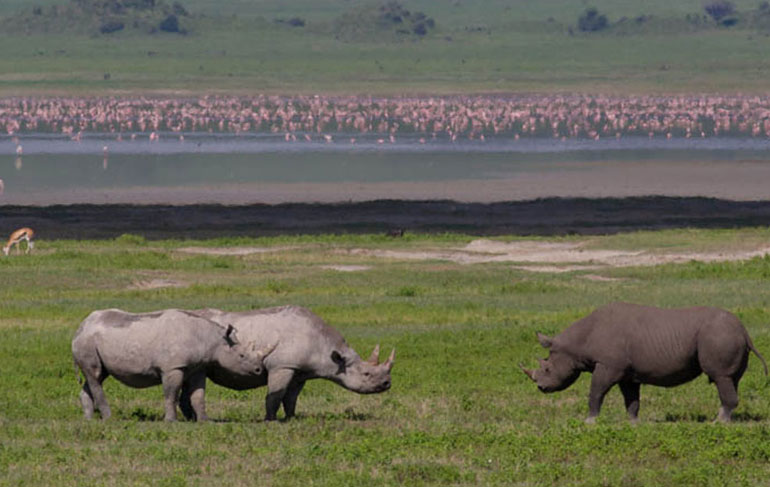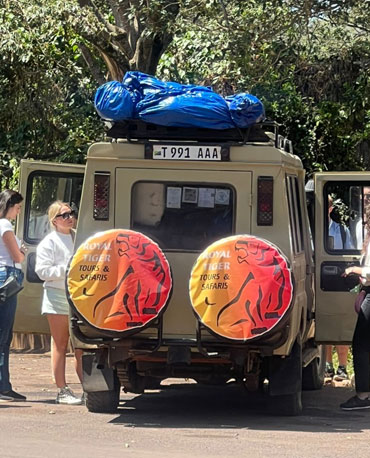


Some two to three million years ago, a large supervolcano imploded, creating the world’s largest inactive, intact volcanic caldera: the Ngorongoro Crater. Covering an area of roughly 300 square kilometers, the crater is home to more than 25,000 animals, supported by fertile soils and nutritious grasses. Due to the vast size and enclosed nature of the crater, it has formed its own unique ecosystem, offering one of the richest wildlife viewing experiences in Africa. Beyond the Ngorongoro Crater and into the surrounding highlands, which form the greater Ngorongoro Conservation Area, lie traditional Maasai villages dotted along rolling hillsides, providing a unique insight into the daily lives of this fascinating culture, and opportunities to explore ancient pastoral routes through mountain forests and rocky outcrops, against a backdrop of dramatic volcanic peaks and valleys.
The Ngorongoro Crater is like game viewing gone crazy! It is not surprising that it is one of Tanzania’s major tourist drawcards. Within the crater rim, a daily wildlife drama is played out as large herds of zebra and wildebeest graze near lions, leopards, elephants, and black rhinos. Outside of the crater, a similar drama continues in a more spread-out manner with Masai herdsmen thrown into the mix.
Country
Tanzania
Visa Requirements
Personal Documents Requied
Languages Spoken
English/Swahili
Currency Used
USD
Area (km2)
102 km2
Ngorongoro Crater offers superb wildlife viewing throughout the year. However, the dry season (June to September) is good to spot wildlife easily as the vegetation becomes thinner and wild animals concentrate around the water sources. The wet season (November to May) offers a spectacular green view of nature. Migratory birds can be seen in plenty.

Trusted by
Plan your trip with us